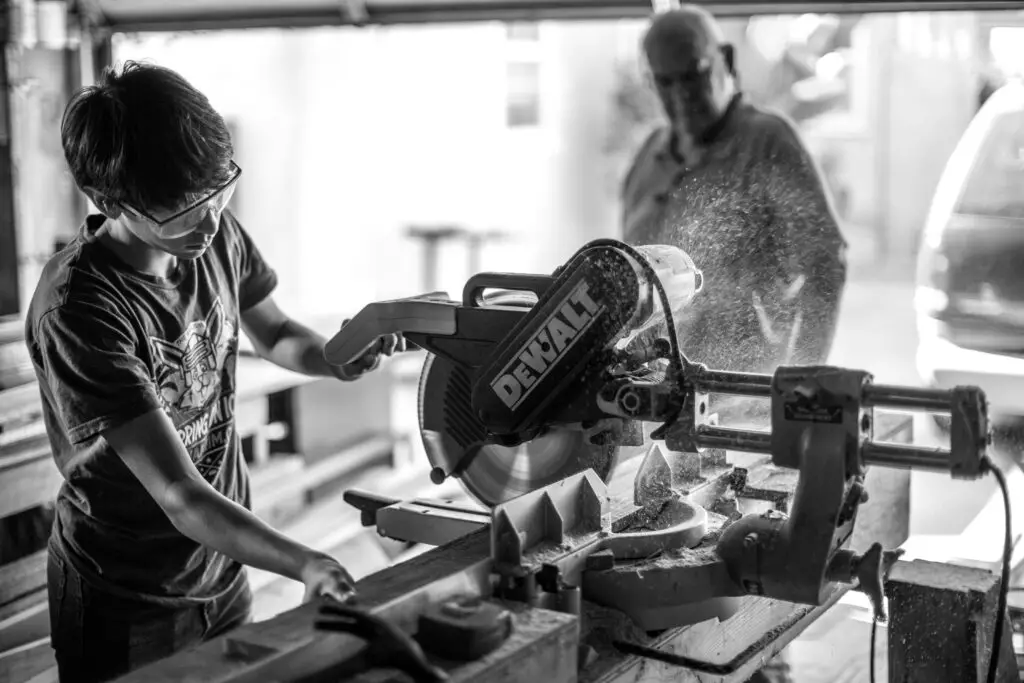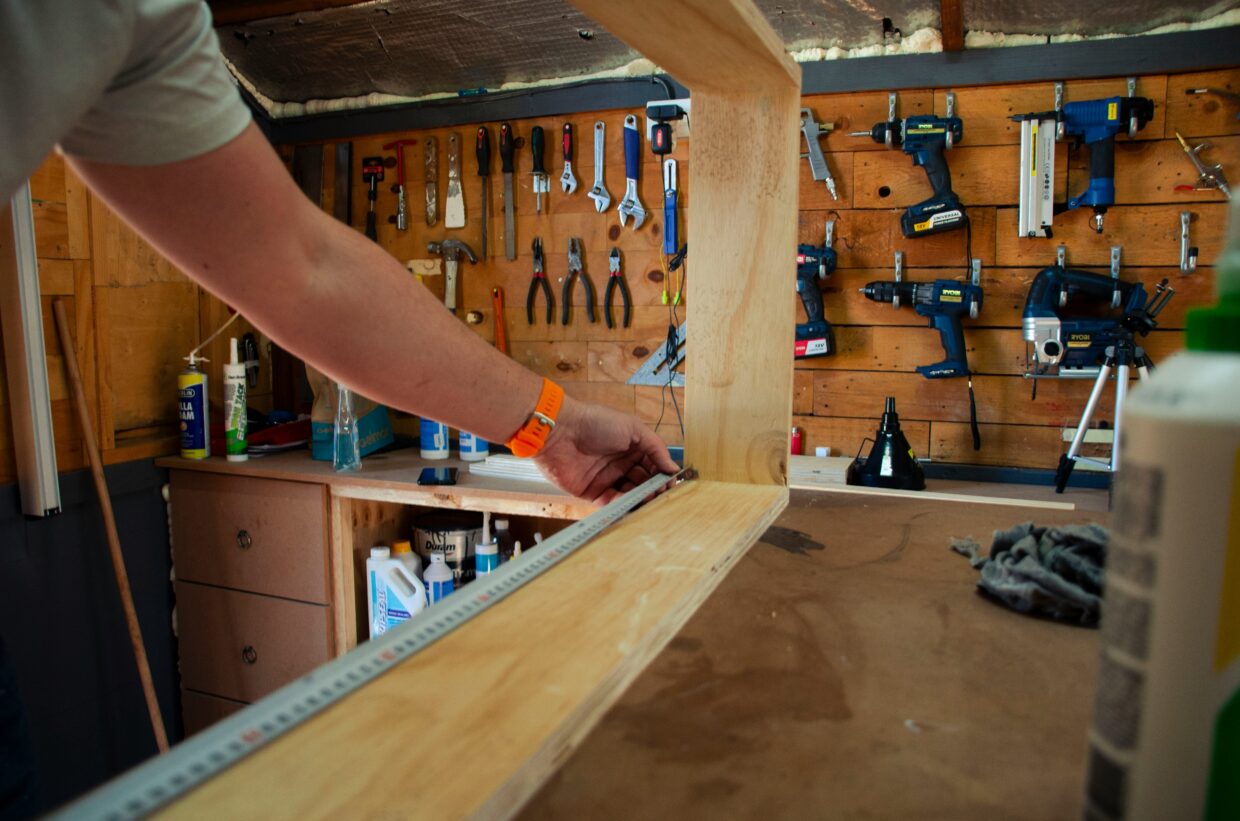Navigating the world of insurance can feel like trying to assemble a flat-pack furniture kit with missing instructions – a bit overwhelming, right? Especially when you’re a skilled carpenter, focused on creating beautiful, functional pieces, the last thing you want to worry about is what happens if a project goes sideways. But here’s the honest truth: protecting your craft, your business, and your peace of mind with the right carpentry insurance isn’t just a good idea; it’s absolutely essential.

Why Your Sawdust-Covered Dream Needs a Safety Net: The Importance of Carpentry Insurance
Imagine this: You’ve just finished a stunning custom-built bookshelf for a client. It’s perfect, solid, a true work of art. As you’re carefully moving it into place, a sudden slip, and crash – it tumbles, damaging both the bookshelf and the client’s prized antique vase. Or maybe, while working on a job site, an accidental misstep leads to an injury that keeps you off your feet for weeks.
These aren’t scare tactics; they’re very real, very possible scenarios that carpenters face every day. Without the right insurance, these “oops” moments can quickly turn into financial nightmares, threatening everything you’ve worked so hard to build. From costly repairs and legal fees to lost income and medical bills, the financial fallout can be devastating.
This isn’t about hoping for the worst; it’s about planning for the unexpected. It’s about ensuring that a single mishap doesn’t derail your entire career. In this article, we’re going to walk you through the ins and outs of carpentry insurance, breaking down the jargon and helping you understand exactly what you need to protect your business. By the time you’re done reading, you’ll feel empowered, informed, and ready to make smart decisions that safeguard your future. Let’s get those tools sharpened, and dive in!
What Exactly is Carpentry Insurance and Why Do You Need It?
At its core, carpentry insurance is a collection of different insurance policies designed to protect you and your carpentry business from a wide range of risks. Think of it as a custom-built safety shield for your livelihood.
The Foundation: General Liability Insurance
This is often considered the bedrock of any business insurance portfolio, and for good reason. General liability insurance protects you from claims of bodily injury or property damage to third parties that occur as a result of your business operations.
- Property Damage Protection: Remember that antique vase scenario? General liability would typically cover the cost of repairing or replacing it. It also covers damage you might accidentally cause to a client’s home or property while working.
- Bodily Injury Protection: If a client or a passerby trips over your tools on a job site and gets injured, this coverage would help with their medical expenses and any potential legal fees if they decide to sue.
- Advertising Injury: While less common for carpenters, this also covers claims of libel, slander, copyright infringement, and other advertising-related offenses.
Even if you’re the most careful carpenter in the world, accidents happen. A stray nail, a dropped hammer, or even just leaving a tool in the wrong place can lead to unforeseen incidents. General liability is your first line of defense against these everyday risks.
Protecting Your Tools and Equipment: Commercial Property Insurance
Your tools are your livelihood. From your trusty miter saw to your essential power drills and hand tools, they represent a significant investment. Commercial property insurance safeguards these vital assets.
- Coverage for Your Shop: If you operate out of a workshop or commercial space, this policy can protect the building itself (if you own it) and its contents from perils like fire, theft, vandalism, and certain natural disasters.
- Tool and Equipment Coverage: This is crucial for carpenters. It covers your tools, machinery, and equipment, whether they’re in your shop, stored in your vehicle, or on a job site. Imagine the hit your business would take if all your power tools were stolen overnight – this insurance helps you replace them quickly so you can get back to work. Some policies offer “inland marine” coverage specifically for tools and equipment in transit or at various job sites.
It’s worth noting that simply having homeowner’s or renter’s insurance won’t typically cover business property or liabilities. You need specialized commercial coverage for your tools.

When Your Wheels are Your Workforce: Commercial Auto Insurance
If you use your truck, van, or any other vehicle to transport tools, materials, or even yourself to job sites, then commercial auto insurance is a non-negotiable. Your personal auto policy likely won’t cover accidents that occur while you’re using your vehicle for business purposes.
- Accident Coverage: This covers damages to your business vehicle, as well as injuries or property damage you cause to others in an accident while driving for work.
- Beyond the Basics: Commercial auto policies often include higher liability limits than personal policies, which is essential given the potentially higher risks associated with business driving. It can also cover things like vandalism or theft of your vehicle.
Think about how many miles you put on your vehicle for work. Each trip carries a risk, and commercial auto insurance ensures you’re protected on the road.
Tailoring Your Coverage: Beyond the Basics
While general liability, commercial property, and commercial auto are crucial, your specific carpentry business might benefit from additional, more specialized coverages.
Protecting Your Team: Workers’ Compensation Insurance
If you have employees – even just one part-time helper – workers’ compensation insurance is almost certainly a legal requirement. This coverage provides medical benefits and wage replacement for employees who become injured or ill as a direct result of their job.
- Employee Safety Net: If an employee cuts their hand with a saw or strains their back lifting heavy lumber, workers’ comp ensures they receive the necessary medical treatment and some of their lost wages, without you having to pay out-of-pocket.
- Protection from Lawsuits: It also protects you from lawsuits filed by injured employees, as long as you comply with the terms of the workers’ compensation system.
Even for small operations, understanding your state’s specific workers’ compensation laws is vital.
Safeguarding Against Mistakes: Professional Liability (Errors & Omissions)
While less common for traditional carpentry, if your work involves any design, consultation, or highly specialized advice, professional liability insurance, also known as Errors & Omissions (E&O) insurance, might be a smart addition.
- Design Flaws: If a client claims your design recommendations for a built-in cabinet system led to structural issues, or that your advice caused them financial loss, E&O can cover legal defense costs and damages.
- Mistakes in Professional Advice: It protects you against claims of negligence, errors, or omissions in the professional services you provide.
Consider this if you’re venturing beyond just building and into the realm of offering professional carpentry consulting or design.
Covering the Big Jobs: Builders Risk Insurance
For larger construction or renovation projects, particularly if you’re involved in new builds or substantial additions, builders risk insurance (sometimes called “course of construction” insurance) is essential.
- Protecting Projects Underway: This policy covers the building structure and materials during the construction phase from perils like fire, theft, vandalism, and severe weather.
- Who Needs It?: It’s typically purchased by the property owner or the general contractor, but as a carpenter, you might be listed as an insured party, or you may be required to ensure the general contractor has this in place before you begin work.
If you find yourself taking on larger-scale projects, discuss this with your insurance provider.
How to Get the Right Fit: Choosing Your Carpentry Insurance
Now that you know the various pieces of the puzzle, how do you put them together to get the right coverage for your carpentry business?
Assess Your Risks (Be Honest!):
- What kind of carpentry do you do? Are you mostly doing small home repairs, custom furniture, large-scale renovations, or commercial build-outs? The scope of your work directly impacts your risk.
- Where do you work? Do you have a dedicated workshop, or do you primarily work on client premises?
- Do you have employees? Even temporary or part-time help counts.
- What’s the value of your tools and equipment? Don’t underestimate this!
- How often are you driving for work?
Shop Around (Like You’re Sourcing the Best Lumber!):
Don’t just jump at the first quote you get. Different insurance providers specialize in different areas and offer varying rates.
- Independent Agents: Working with an independent insurance agent can be a game-changer. They work with multiple insurance companies and can compare quotes to find you the best coverage at the most competitive price. They’re like your personal guide through the insurance forest!
- Online Quotes: Many reputable insurance companies offer online quote tools, but be prepared to follow up with a conversation to ensure you’re getting comprehensive coverage tailored to your needs.
- Industry Associations: Check if any carpentry or trades associations offer group insurance rates or recommendations for providers.
Understand the Fine Print (It’s Not as Scary as It Sounds):
When you get quotes, pay close attention to:
- Policy Limits: This is the maximum amount the insurance company will pay out for a covered claim. Make sure the limits are high enough to adequately protect your assets. For example, if you’re working on a $100,000 custom kitchen, you’ll want liability limits that reflect that potential exposure.
- Deductibles: This is the amount you have to pay out-of-pocket before your insurance coverage kicks in. A higher deductible usually means lower premiums, but make sure you can comfortably afford your deductible if you need to make a claim.
- Exclusions: What isn’t covered by the policy? Understanding exclusions is just as important as knowing what is covered.
- Read Reviews: Look up reviews for the insurance providers you’re considering. What do other small business owners say about their claims process and customer service?
According to a placeholder 2025 Statista report, small businesses that invest in adequate insurance coverage are XX% more likely to recover quickly from unforeseen incidents compared to those without. This highlights the real-world impact of being prepared.

Don’t Just Buy It, Understand It: Tips for Managing Your Policy
Getting your carpentry insurance sorted isn’t a one-and-done deal. It’s an ongoing relationship that requires a little attention to keep things humming along smoothly.
Regular Reviews:
Life changes, and so does your business!
- Annual Check-up: Just like you service your tools, schedule an annual review of your insurance policies with your agent. Have you purchased new, expensive equipment? Are you taking on larger projects? Have you hired new employees? These changes might require adjustments to your coverage.
- Business Growth: As your business grows, your risks and insurance needs will likely evolve. Don’t let your coverage fall behind your success!
Keep Meticulous Records:
In the unfortunate event you need to make a claim, having organized records will be your best friend.
- Policy Documents: Keep copies of all your policy documents in a safe, accessible place. Both physical and digital copies are a good idea.
- Equipment Inventory: Maintain an up-to-date inventory of all your tools and equipment, including purchase dates, costs, and serial numbers. Photos or videos can also be incredibly helpful.
- Client Contracts & Communication: If a dispute arises, clear records of your agreements and communications with clients can be invaluable.
Ask Questions (No Question is Too Small!):
Your insurance agent is there to help you. If anything in your policy seems unclear, or if you have a new project coming up that feels a bit outside your usual scope, ask them about it. It’s always better to clarify upfront than to discover a gap in coverage when you need it most.
Ready to Nail Down Your Protection? Now It’s Your Turn!
We’ve covered a lot of ground, from the foundational general liability to the specific needs of commercial auto and workers’ comp. Understanding carpentry insurance doesn’t have to be daunting. It’s about empowering yourself with the knowledge to make smart decisions for your business.
Think of it this way: you wouldn’t start a complex woodworking project without the right safety gear and a well-thought-out plan, right? Protecting your carpentry business with the right insurance is no different. It’s an investment in your future, your peace of mind, and the longevity of your craft.
So, what’s your next step? Take a moment to assess your current business needs. Are you a sole proprietor working on small projects, or do you have a growing team tackling big jobs? Reach out to a reputable insurance agent, armed with the knowledge you’ve gained today. Ask questions, compare quotes, and build an insurance plan that’s as solid and reliable as the beautiful pieces you create.
The sawdust will fly, the wood will be shaped, and you’ll be able to focus on what you do best, knowing your business is protected. Now go forth and build with confidence!
Frequently Asked Questions (FAQs) About Carpentry Insurance
Q1: Do I really need carpentry insurance if I’m a sole proprietor working from home?
A: Yes, absolutely! Even if you’re a one-person show working from a home workshop or traveling to client sites, you face the same risks of accidental property damage or bodily injury to others. Your homeowner’s policy won’t cover business-related claims. General liability insurance, at a minimum, is highly recommended to protect your personal assets.
Q2: How much does carpentry insurance cost?
A: The cost of carpentry insurance varies widely depending on several factors, including the type and amount of coverage you choose, your location, the size of your business, your claims history, and the specific risks associated with your carpentry work. A small sole proprietor with basic general liability might pay a few hundred dollars a year, while a larger business with employees and extensive equipment will pay significantly more. Getting multiple quotes is the best way to determine actual costs.
Q3: What happens if I don’t have carpentry insurance and an accident occurs?
A: If you don’t have insurance and an accident occurs that leads to property damage, bodily injury, or a lawsuit, you would be personally responsible for all costs. This could include expensive medical bills, property repair or replacement, and substantial legal fees if you are sued. Without insurance, these costs could quickly deplete your personal savings, force you to sell assets, or even lead to bankruptcy.
Q4: Is “tool insurance” separate from commercial property insurance?
A: “Tool insurance” is often a component of or an extension to a commercial property insurance policy, or sometimes an “inland marine” policy. While commercial property insurance generally covers your tools and equipment when they are on your business premises, an inland marine policy specifically covers tools that are transported between job sites or stored off-site. When discussing commercial property insurance, be sure to clarify with your agent how your tools and equipment are covered, especially when they are not in your primary workshop.
Q5: Can I get carpentry insurance even if I have a small budget?
A: Yes, it’s possible to find affordable carpentry insurance even on a limited budget. Start with the most critical coverage, like general liability. Many insurance providers offer basic packages designed for small businesses. Focus on getting a policy that offers adequate protection for your most significant risks, and consider adjusting deductibles to manage premium costs. An independent insurance agent can be very helpful in finding cost-effective solutions tailored to your budget.









